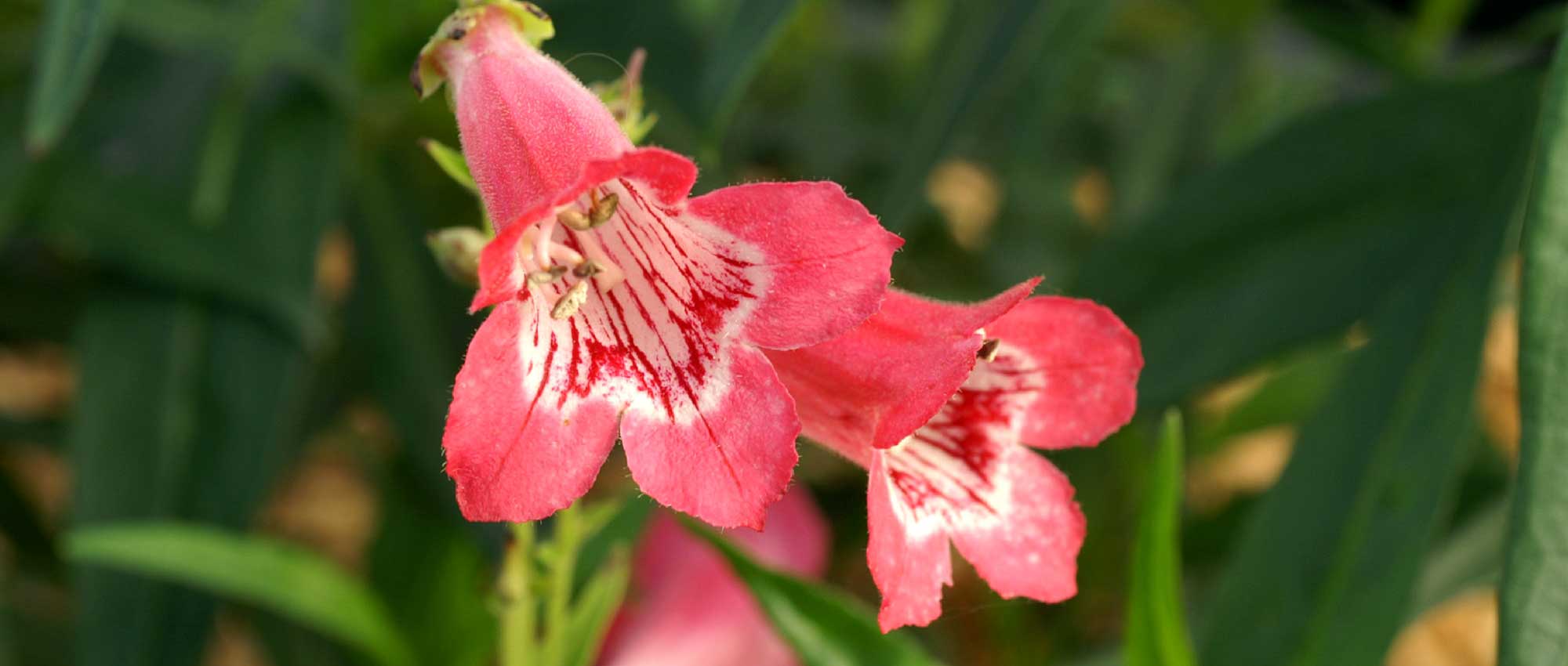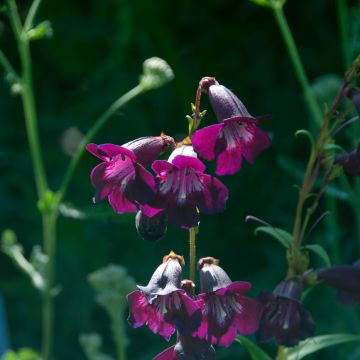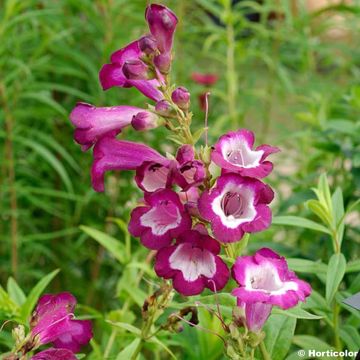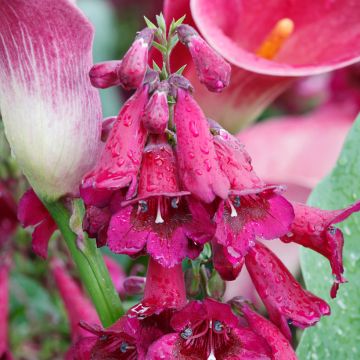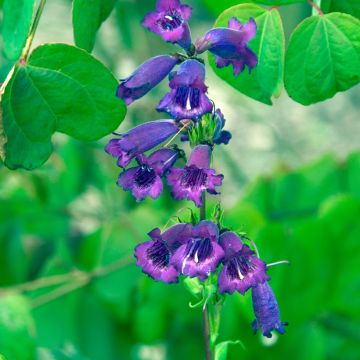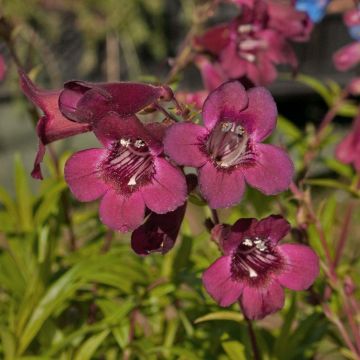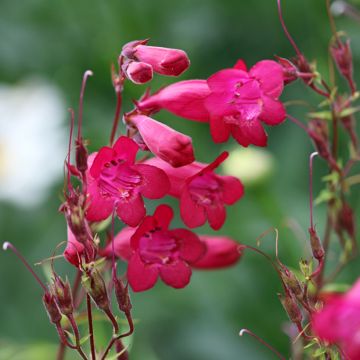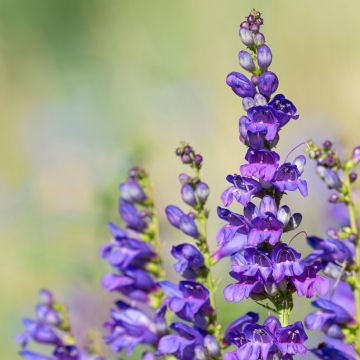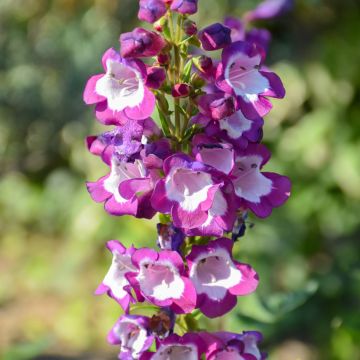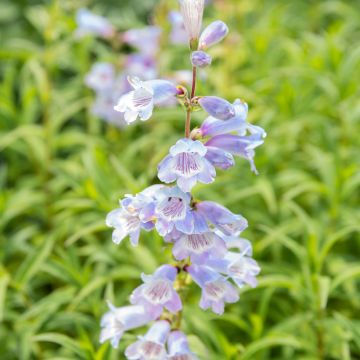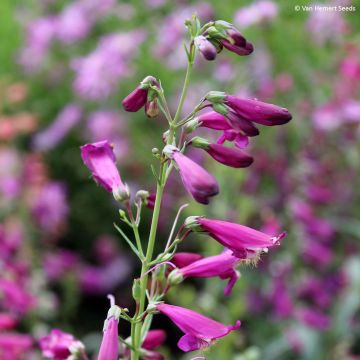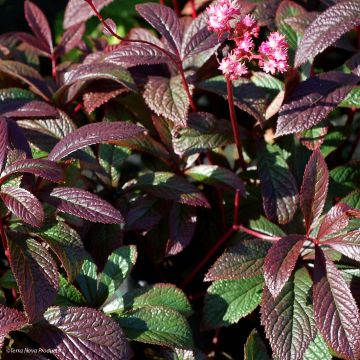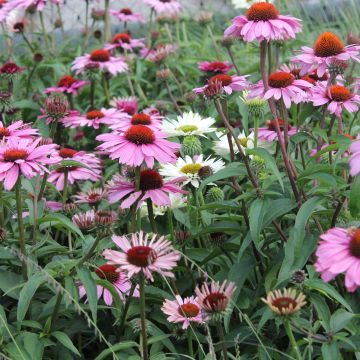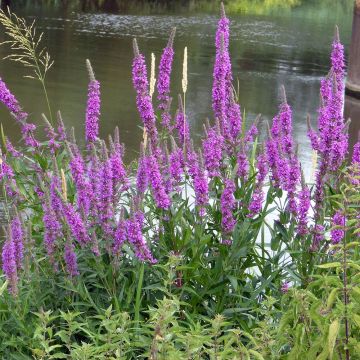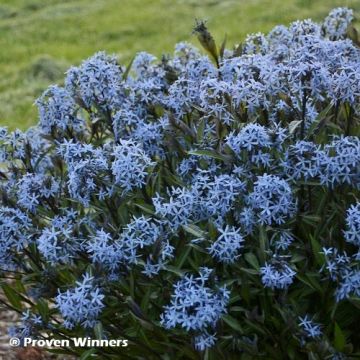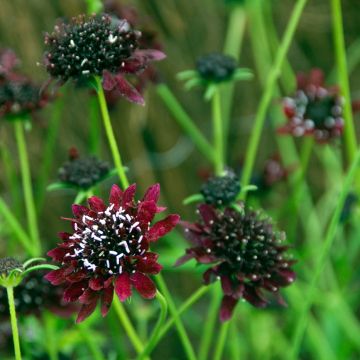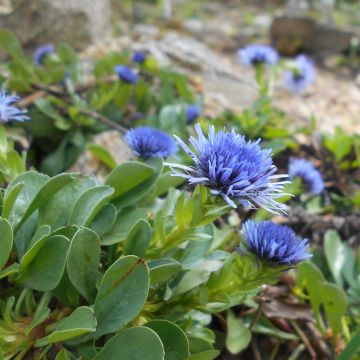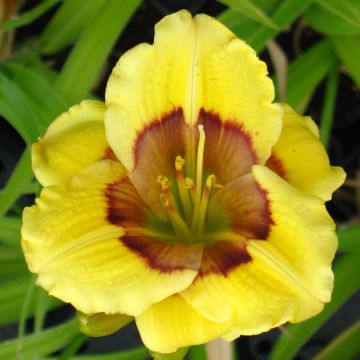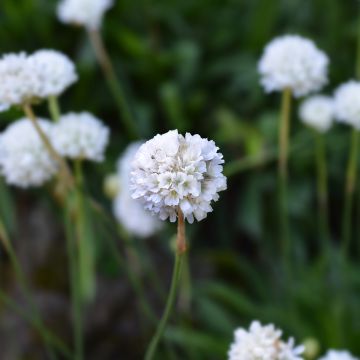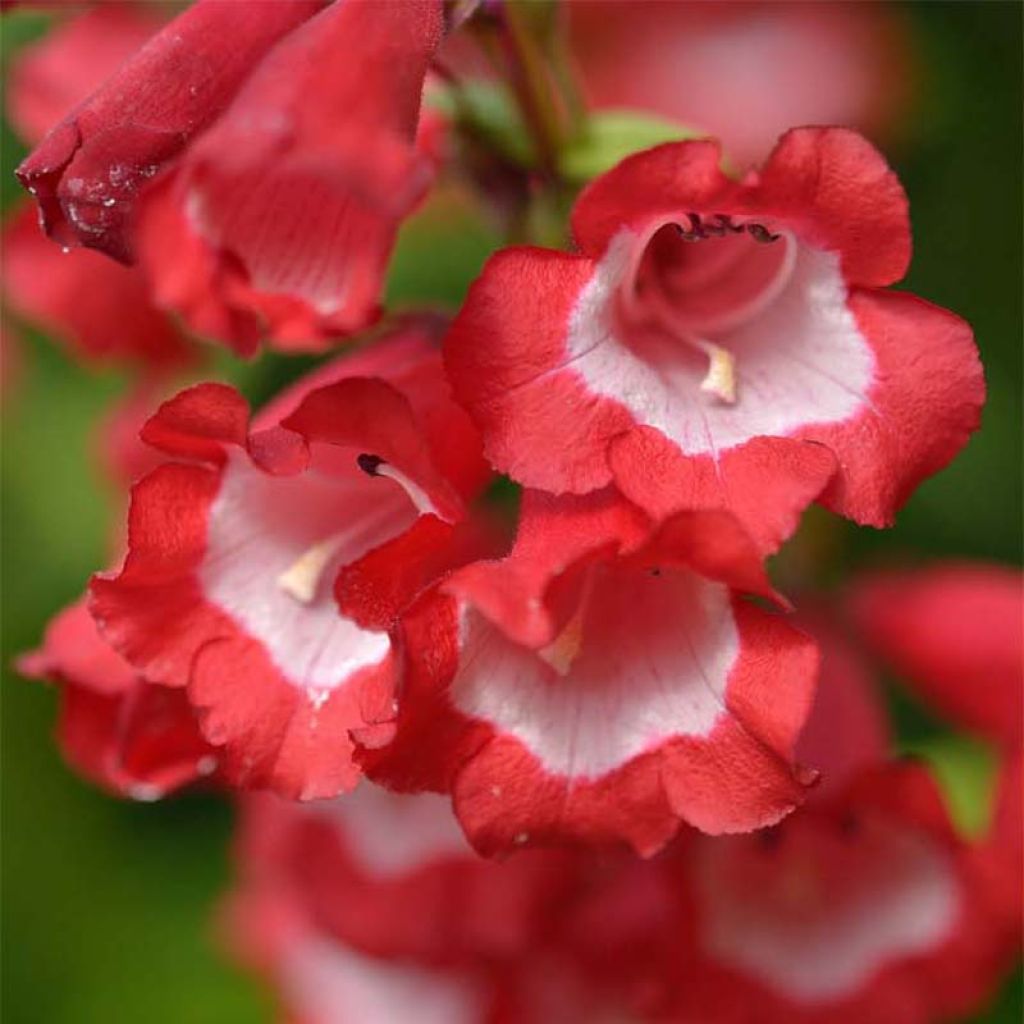

Penstemon Le Phare - Galane


Penstemon hybrida Le Phare - Beardtongue
Penstemon hybrida Le Phare - Beardtongue
Penstemon x hybrida Le Phare
Bellflower Beardtongue, Canterbury Bells Penstemon
Hello, my order has arrived safely, and 13 plants are doing well. However, the Penstemon is not in an 8-9 cm pot as indicated, but rather a 7 cm one, and it doesn't look very healthy. I will still plant it, but I wanted to let you know. Otherwise, congratulations on your absolutely wonderful website!
Anne, 04/10/2025
Special offer!
Receive a €20 voucher for any order over €90 (excluding delivery costs, credit notes, and plastic-free options)!
1- Add your favorite plants to your cart.
2- Once you have reached €90, confirm your order (you can even choose the delivery date!).
3- As soon as your order is shipped, you will receive an email containing your voucher code, valid for 3 months (90 days).
Your voucher is unique and can only be used once, for any order with a minimum value of €20, excluding delivery costs.
Can be combined with other current offers, non-divisible and non-refundable.
Home or relay delivery (depending on size and destination)
Schedule delivery date,
and select date in basket
This plant carries a 12 months recovery warranty
More information
We guarantee the quality of our plants for a full growing cycle, and will replace at our expense any plant that fails to recover under normal climatic and planting conditions.
Would this plant suit my garden?
Set up your Plantfit profile →
Description
The 'Le Phare' hybrid Penstemon displays a dazzling flowering, which releases all its strength under the brutal summer sun. Its large, light, bright red campanulate flowers bloom on a deep white throat that captures the light and guides the gaze, randomly marking the garden in the beds. They are carried by a very bushy plant with semi-evergreen foliage quite wide and green-blue. This exceptional perennial is certainly not the hardiest, but it tolerates occasional periods of drought well and is suitable for ordinary soil. It is also a wonderful cut flower, perfect in sunny beds or planted in large containers.
The 'Le Phare' hybrid Penstemon is a bushy and woody perennial plant belonging to the Scrophulariaceae family, just like foxgloves and snapdragons. Like many hybrid penstemons, it is the result of cross-breeding several species, mostly from Central and North America. This variety forms beautiful dense clumps of 60 cm (24in) in all directions, with branched stems covered with dark green lanceolate foliage. Its growth is quite fast. The flowering extends from June to October, developing at the terminal part of the leafy stems. The bicoloured flowers, in the form of large campanulate bells, are gathered in slightly loose clusters. They display an immaculate white colour, largely bordered by light red.
The 'Le Phare' penstemon is used in beds or borders, among perennials such as agapanthus, caryopteris, Rhodanthemum hosimariensis, Cape daisies, or mixed with annuals such as love-in-a-mist. It will mingle among the rocks of the rockery (in soil not too chalky) with cotton lavenders, rockroses or wormwoods. It also performs well in pots, with appropriate drainage and regular fertilizer inputs. Penstemons also make excellent cut flowers.
Penstemon hybrida Le Phare - Beardtongue in pictures


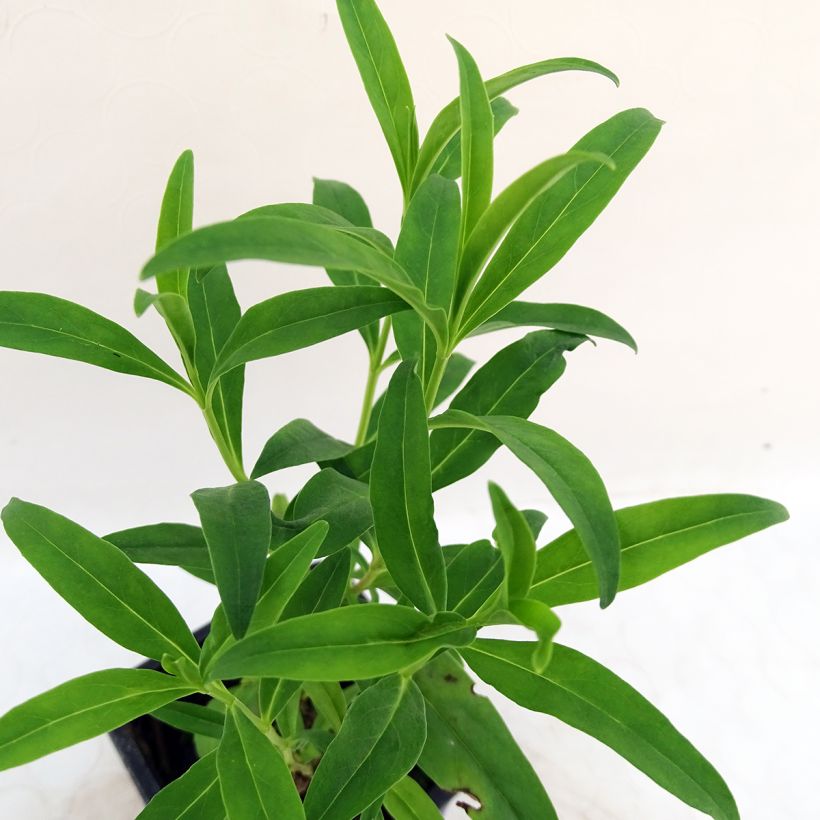

Flowering
Foliage
Plant habit
Botanical data
Penstemon
x hybrida
Le Phare
Scrophulariaceae (Plantaginaceae)
Bellflower Beardtongue, Canterbury Bells Penstemon
Cultivar or hybrid
Other Penstemon
View all →Planting and care
If you want to grow Penstemon 'Le Phare', remember it is not very hardy. It cannot tolerate temperatures below -7°C (19.4°F) to -10°C (14°F). To grow hybrid penstemons successfully, it is essential to have well-drained, cool-to-dry soils rich in nutrients. In damp soils, the plant can rot quickly. It's best to plant them in a warm and sunny location sheltered from cold winds if you live in a cool climate. For hot climates, a relatively cool and semi-shady position is better. If you live in a very cold region, take stem cuttings in autumn. Penstemons are not prone to diseases and require minimal maintenance. Remove the faded flowers in autumn and slightly shorten the deflowered stems without cutting them back to the ground, particularly in humid regions. This is important because foliage helps regulate humidity. Wait until spring (March-April) to shorten the branches damaged by the cold. If it's dry during the summer, water regularly to support flowering. Protect the base with glass or a frame to prevent severe cold damage in the coldest regions. To rejuvenate the plants, divide your penstemons every three or four years, but only in the spring.
Planting period
Intended location
Care
Planting & care advice
-
, onOrder confirmed
Reply from on Promesse de fleurs
Similar products
Haven't found what you were looking for?
Hardiness is the lowest winter temperature a plant can endure without suffering serious damage or even dying. However, hardiness is affected by location (a sheltered area, such as a patio), protection (winter cover) and soil type (hardiness is improved by well-drained soil).

Photo Sharing Terms & Conditions
In order to encourage gardeners to interact and share their experiences, Promesse de fleurs offers various media enabling content to be uploaded onto its Site - in particular via the ‘Photo sharing’ module.
The User agrees to refrain from:
- Posting any content that is illegal, prejudicial, insulting, racist, inciteful to hatred, revisionist, contrary to public decency, that infringes on privacy or on the privacy rights of third parties, in particular the publicity rights of persons and goods, intellectual property rights, or the right to privacy.
- Submitting content on behalf of a third party;
- Impersonate the identity of a third party and/or publish any personal information about a third party;
In general, the User undertakes to refrain from any unethical behaviour.
All Content (in particular text, comments, files, images, photos, videos, creative works, etc.), which may be subject to property or intellectual property rights, image or other private rights, shall remain the property of the User, subject to the limited rights granted by the terms of the licence granted by Promesse de fleurs as stated below. Users are at liberty to publish or not to publish such Content on the Site, notably via the ‘Photo Sharing’ facility, and accept that this Content shall be made public and freely accessible, notably on the Internet.
Users further acknowledge, undertake to have ,and guarantee that they hold all necessary rights and permissions to publish such material on the Site, in particular with regard to the legislation in force pertaining to any privacy, property, intellectual property, image, or contractual rights, or rights of any other nature. By publishing such Content on the Site, Users acknowledge accepting full liability as publishers of the Content within the meaning of the law, and grant Promesse de fleurs, free of charge, an inclusive, worldwide licence for the said Content for the entire duration of its publication, including all reproduction, representation, up/downloading, displaying, performing, transmission, and storage rights.
Users also grant permission for their name to be linked to the Content and accept that this link may not always be made available.
By engaging in posting material, Users consent to their Content becoming automatically accessible on the Internet, in particular on other sites and/or blogs and/or web pages of the Promesse de fleurs site, including in particular social pages and the Promesse de fleurs catalogue.
Users may secure the removal of entrusted content free of charge by issuing a simple request via our contact form.
The flowering period indicated on our website applies to countries and regions located in USDA zone 8 (France, the United Kingdom, Ireland, the Netherlands, etc.)
It will vary according to where you live:
- In zones 9 to 10 (Italy, Spain, Greece, etc.), flowering will occur about 2 to 4 weeks earlier.
- In zones 6 to 7 (Germany, Poland, Slovenia, and lower mountainous regions), flowering will be delayed by 2 to 3 weeks.
- In zone 5 (Central Europe, Scandinavia), blooming will be delayed by 3 to 5 weeks.
In temperate climates, pruning of spring-flowering shrubs (forsythia, spireas, etc.) should be done just after flowering.
Pruning of summer-flowering shrubs (Indian Lilac, Perovskia, etc.) can be done in winter or spring.
In cold regions as well as with frost-sensitive plants, avoid pruning too early when severe frosts may still occur.
The planting period indicated on our website applies to countries and regions located in USDA zone 8 (France, United Kingdom, Ireland, Netherlands).
It will vary according to where you live:
- In Mediterranean zones (Marseille, Madrid, Milan, etc.), autumn and winter are the best planting periods.
- In continental zones (Strasbourg, Munich, Vienna, etc.), delay planting by 2 to 3 weeks in spring and bring it forward by 2 to 4 weeks in autumn.
- In mountainous regions (the Alps, Pyrenees, Carpathians, etc.), it is best to plant in late spring (May-June) or late summer (August-September).
The harvesting period indicated on our website applies to countries and regions in USDA zone 8 (France, England, Ireland, the Netherlands).
In colder areas (Scandinavia, Poland, Austria...) fruit and vegetable harvests are likely to be delayed by 3-4 weeks.
In warmer areas (Italy, Spain, Greece, etc.), harvesting will probably take place earlier, depending on weather conditions.
The sowing periods indicated on our website apply to countries and regions within USDA Zone 8 (France, UK, Ireland, Netherlands).
In colder areas (Scandinavia, Poland, Austria...), delay any outdoor sowing by 3-4 weeks, or sow under glass.
In warmer climes (Italy, Spain, Greece, etc.), bring outdoor sowing forward by a few weeks.






























